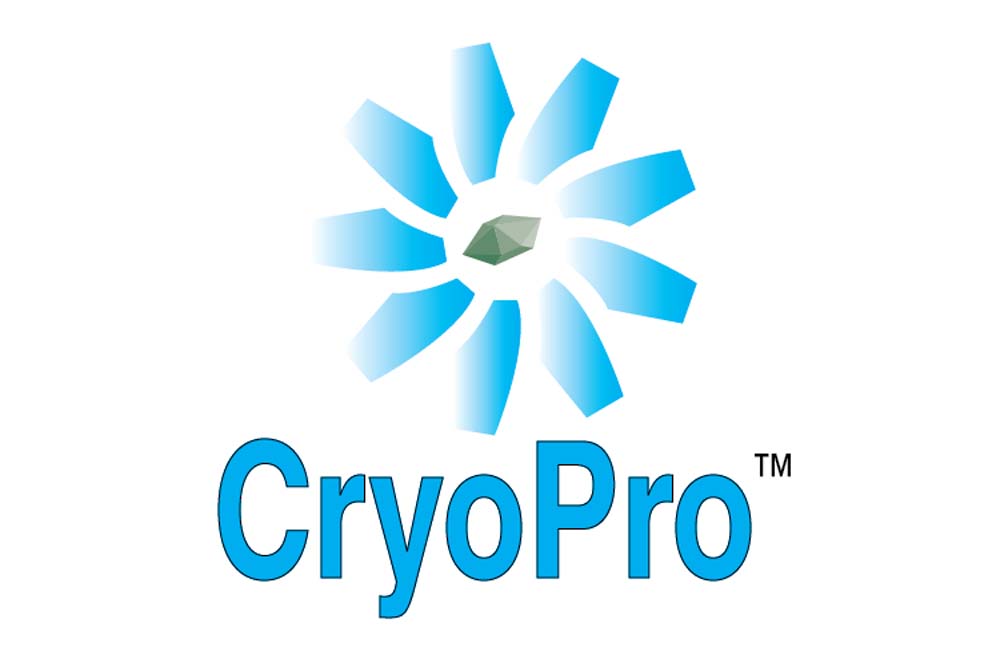CryoPro蛋白结晶-Hampton
上海金畔生物代理Hampton research品牌蛋白结晶试剂耗材工具等,我们将竭诚为您服务,欢迎访问Hampton research官网或者咨询我们获取更多相关Hampton research品牌产品信息。


Products > Optimization Screens > CryoPro > CryoPro
CryoPro
Applications
- Water soluble cryoprotectant reagent set designed for the cryopreservation of biological macromolecular crystals
Features
- 48 unique cryoprotectants
- Contains the following Cryoprotectants
- Organic, non-volatile
- Non-detergent
- Osmolyte
- Polyol
- Polymer/Polyol
- Polymer
- Solvent
- Sugar
- Salt
- Mixture
Description
As in selecting reagents for crystallization, the selection of a suitable cryoprotectant involves some trial and error as well as a screening.
A suitable cryoprotectant, when mixed with the crystal and crystallization reagent, will cool to cryogenic temperature without ice formation and damage to the crystal. To assay for the proper concentration of cryoprotectant in the reagent used to grow the crystal, one can mix the cryoprotectant with the crystallization reagent and employ the desired cooling method (for example, place the solution in a CryoLoop™ and place the CryoLoop in a cryostream). Observe for ice formation either visually or with x-ray diffraction. Upon cooling, a transparent drop and x-ray diffraction pattern, free of powder diffraction rings or “ice rings” indicates success. The appearance of a cloudy drop or “ice rings” indicates an inappropriate cryoprotectant concentration or cryoprotectant. Incrementally increase the concentration and/or composition of the cryoprotectant serially 5 to 10% and repeat until the cooled drop remains clear while in the cryostream. Once a clear drop is achieved in the cryostream, this is typically a good starting point for cryopreservation of the crystal.
Some crystals can simply be dipped or washed quickly in a simple cryoprotectant for successful cryopreservation. However, when all else fails, a rational assay of each cryoprotectant with incremental increases in cryoprotectant concentration as well as a test of mixtures can be help to identify the best cryoprotectant for a crystal.
Each CryoPro kit contains 1 milliliter each of 48 unique cryoprotectants. Supplied as one set of two boxes, each containing 24 reagents.
Ready to use cryoprotectants are formulated using high purity reagents with CryoPro reagents and are formulated using Type 1+ ultrapure water, 18.2 MO•cm resistivity at 25°C, < 5 ppb Total Organic Carbon, < 1 Bacteria (CFU/ml), < 0.03 Endotoxin (EU/ml) and are sterile filtered.
专为生物大分子晶体冷冻保存设计的水溶性冷冻保护剂套装
特征
48 种独特的冷冻保护剂
包含以下冷冻保护剂
有机,非挥发性
非洗涤剂
渗透液
多元醇
聚合物/多元醇
聚合物
溶剂
糖
盐
混合物
描述
在选择用于结晶的试剂时,选择合适的冷冻保护剂涉及一些反复试验以及筛选。一种合适的冷冻保护剂,当与晶体和结晶试剂混合时,会冷却到低温而不会结冰和损坏晶体。为了测定用于生长晶体的试剂中冷冻保护剂的适当浓度,可以将冷冻保护剂与结晶试剂混合并采用所需的冷却方法(例如,将溶液放入 CryoLoop™ 并将 CryoLoop 放入冷冻流)。通过目视或 X 射线衍射观察冰的形成。冷却后,透明液滴和 X 射线衍射图案,没有粉末衍射环或“冰环”表明成功。出现混浊的液滴或“冰环”表明冷冻保护剂浓度或冷冻保护剂浓度不合适。将冷冻保护剂的浓度和/或成分连续增加 5% 到 10%,然后重复,直到冷却的液滴在冷冻流中保持清澈。一旦在冷冻流中实现了清晰的下降,这通常是晶体冷冻保存的良好起点。
一些晶体可以简单地在简单的冷冻保护剂中快速浸入或洗涤,以成功进行冷冻保存。然而,当所有其他方法都失败时,对每种冷冻保护剂进行合理的分析,并逐渐增加冷冻保护剂的浓度,并测试混合物,有助于确定晶体的最佳冷冻保护剂。
每个 CryoPro 试剂盒包含 1 毫升,每种 48 种独特的冷冻保护剂。以一组两盒的形式提供,每盒包含 24 种试剂。
即用型冷冻保护剂使用高纯度试剂和 CryoPro 试剂配制,使用 1+ 型超纯水配制,25°C 时电阻率为 18.2 MO•cm,< 5 ppb 总有机碳,< 1 细菌 (CFU/ml),< 0.03 内毒素 (EU/ml) 并经过无菌过滤。
CryoPro

CAT NO
HR2-073
NAME
DESCRIPTION
1 ml, tube format
PRICE
$284.00
cart quote
Support Material(s)
 HR2-073 CryoPro Documents
HR2-073 CryoPro DocumentsRelated Item(S)
- TMAO
- Santovac Cryo Oil
References
1. Boutron, P. (1987). Non-equilibrium formation of ice in aqueous solutions: efficiency of polyalcohol solutions for vitrification. In: Pegg, D.E. & Karow, A.M. Jr. (eds). The biophysics of organ prese
2. Garman, E.F., & Mitchell, E.P. (1996). Glycerol concentrations required for cryoprotection of 50 typical protein crystallization conditions. J. Appl. Cryst. 29, 584-587.
3. Garman, E.F., & Schneider, T.R. (1997). Macromolecular Cryocrystallography. J. Appl. Cryst. 30, 211-237.
4. Hope, H. (1988). Cryocrystallography of biological macromolecules: a generally applicable method. Acta Cryst. B 44, 22-26.
5. Kottke, T., & Stalke, D. (1993). Crystal handling at low temperatures. J. Appl. Cryst. 26, 615-619.
6. Kwong, P.D. Liu, Y. (1999). Use of cryoprotectants in combination with immiscible oils for flash cooling macromolecular crystals. J. Appl. Cryst. 32, 102-105.
7. Mehl, P. (1989). Experimental dissection of devitrification in aqueous solutions in 1,3-butanediol. Cryobiology. 26, 567-568.
8. Parkin, S., & Hope, H. (1998). Macromolecular cryocrystallography: Cooling, mounting, storage and transportation of crystals. J. Appl. Cryst. 31, 945-953.
9. Petcock, J.M., Wang, Y.-F., DuBois, G.C., Harrison, R.W., & Weber, I.T. (2001). Effects of different post-crystallization soaking conditions on the diffraction of Mtcp1 crystals. Acta Cryst. D57, 763-
10. Petsko, G.A. (1975). J. Mol. Biol. 96, 381-392.
11. Rodgers, D.W. (1994). Cryocrystallography. Structure. 2, 1135-1140.
12. Schneider, T.R. (1997). Cryocrystallography of biological macromolecules. Acta Physica Polonica A. 91, 739-744.
13. Teng, T.-Y. (1990). J. Appl. Cryst. 23, 387-391.
14. Walker, L.J., Moreno, P.O., Hope, H. (1998). Cryocrystallography: effect of cooling medium on sample cooling rate. J. Appl. Cryst. 31, 954-965.
15. Watenpaugh, K.D. (1991). Curr. Op. Struct. Biol. 1, 1012.
16. Proline: Mother Nature’s cryoprotectant applied to protein crystallography. Pemberton TA, Still BR, Christensen EM, Singh H, Srivastava D, Tanner JJ. Acta Crystallogr D Biol Crystallogr. 2012 Aug;68(Pt 8):1010-8. doi: 10.1107/S0907444912019580. Epub 2012 Jul 17.
17. Flash freezing of protein crystals: investigation of mosaic spread and diffraction limit with variation of cryoprotectant concentration E. P. Mitchell and E. F. Garman. J. Appl. Cryst. (1994). 27, 1070-1074 [ doi:10.1107/S0021889894008629 ]
